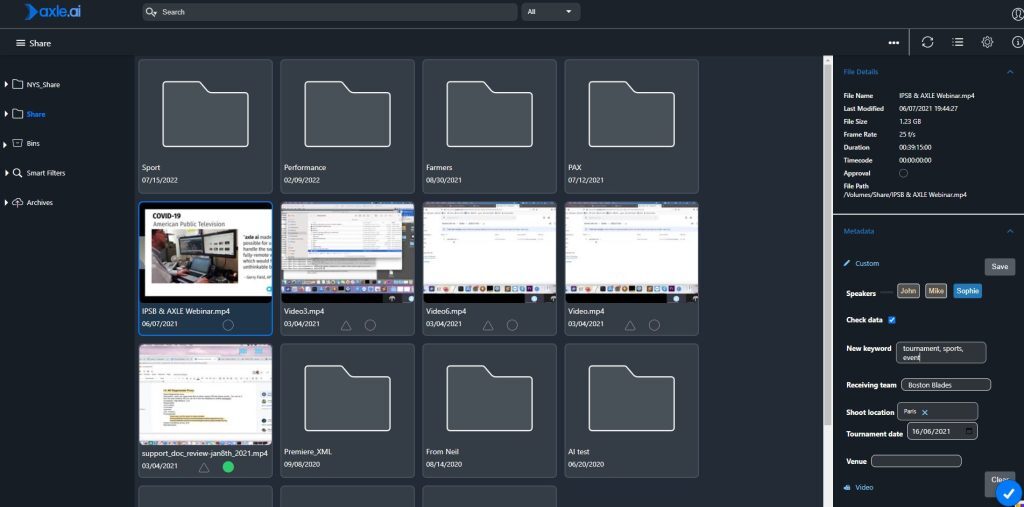This month, we’re highlighting some of our team’s favorite features — some you may know about, and some you may not! These are different aspects of Axle AI with one thing in common: they all make it easier for you and your team to work with video, audio and graphics, whether you’re in the office or working remotely.
?
This week, let’s take a closer look at audio files in Axle…
Axle ai makes it radically simple… to see a visual display for audio files
As well as video files, most Axle users have many other types of files in their system, including audio files. When viewing an audio file, Axle shows a waveform which presents a very useful visual display for the audio files. This makes it easy to browse audio files of different lengths and helps users create precise subclips for export to their editor. As with any file in Axle, users can apply custom metadata to any audio files as well as adding timeline based comments. Users can also process audio files with Axle speech to create an editable, timestamped and exportable transcript file.
